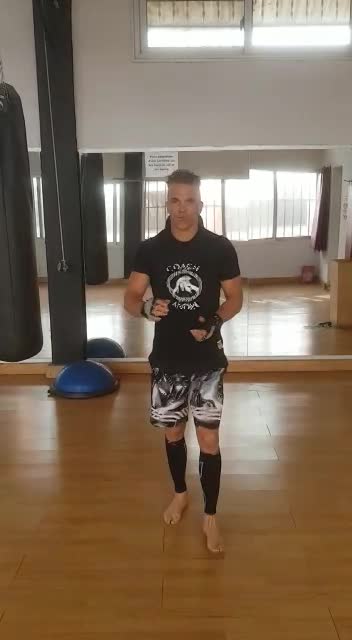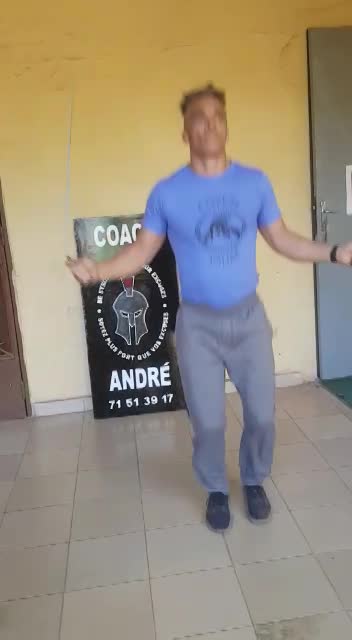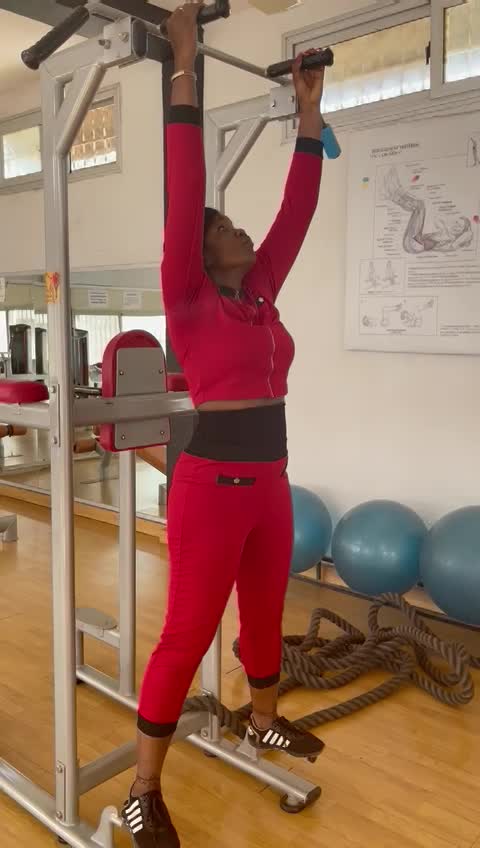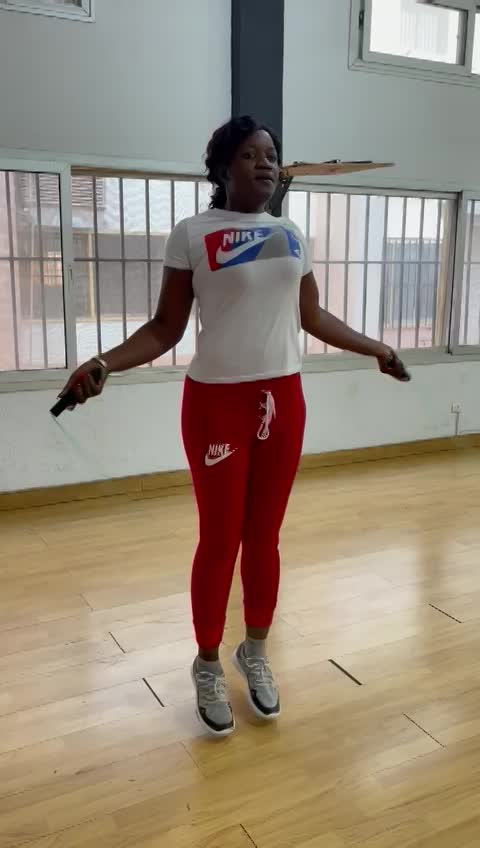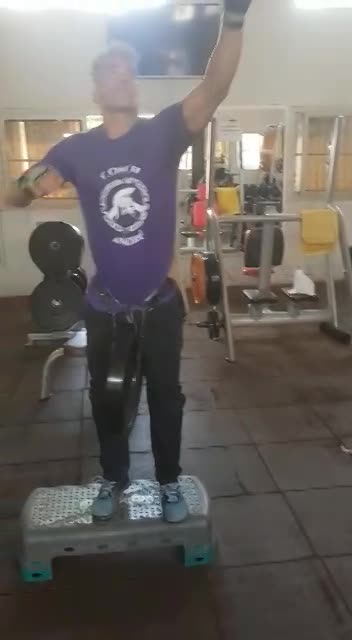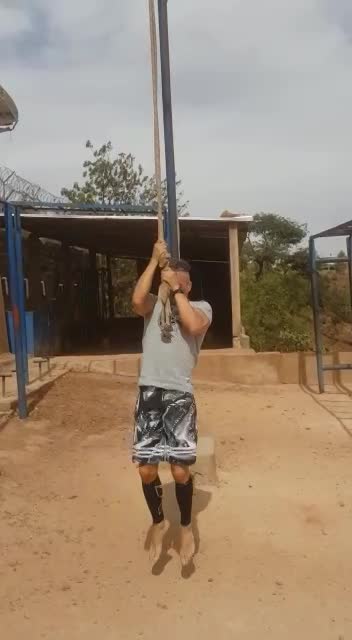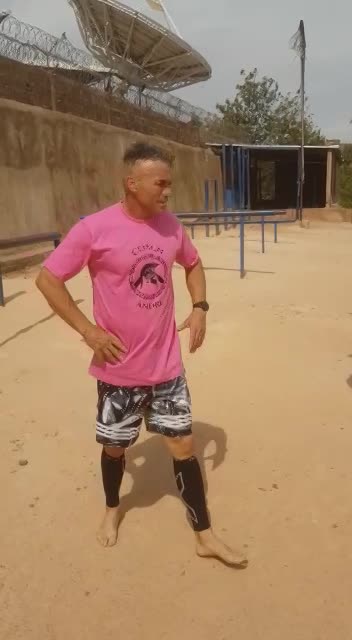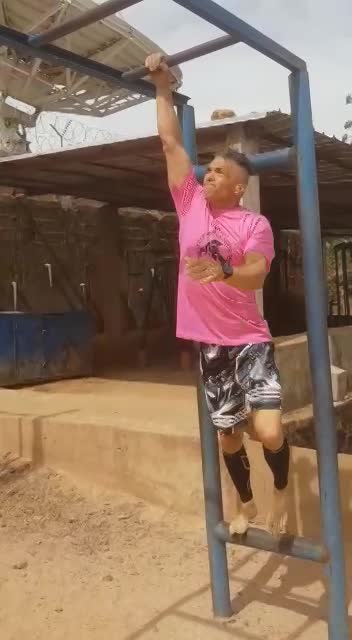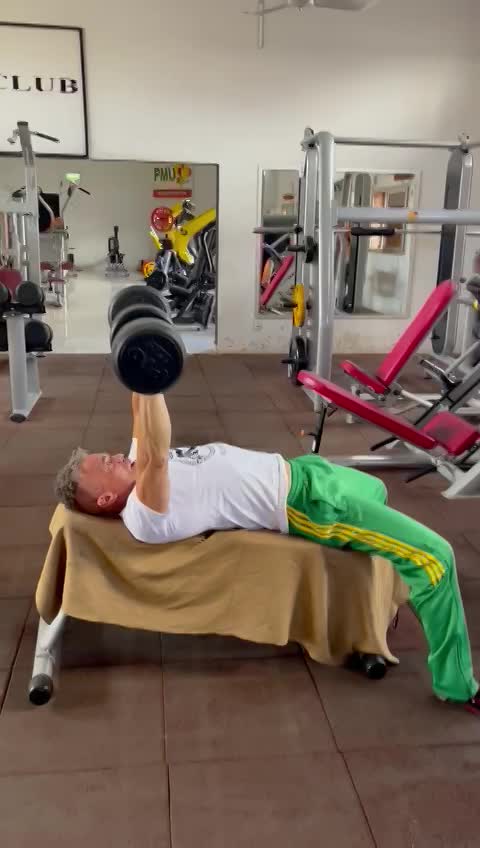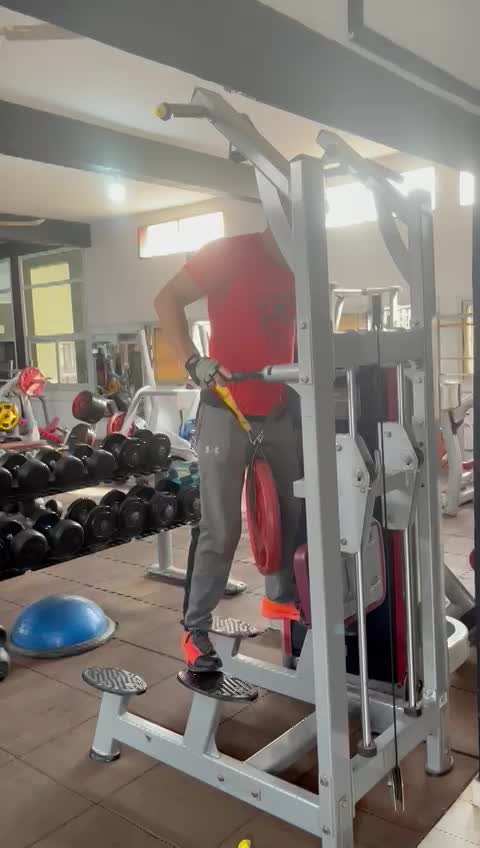Conditionnement physique et santé mentale
Read MoreFITNESS WITH COACH ANDRE
Be Stronger Than Your Excuses
À propos
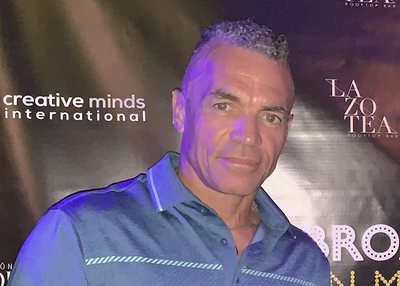
L'entraîneur André a une vaste expérience de l'entraînement et du coaching dans le monde entier dans les domaines du fitness et de la médecine. Il possède diverses qualifications d'entraîneur, allant d'un entraîneur de club d'athlétisme, d'un entraîneur de gymnastique (BAGA) tous appareils, d'une association nationale de culturisme amateur, de l'entraînement du corps et du conditionnement, à des prix internationaux d'entraîneur de fitness. Il est également sur le point de terminer son cours de nutrition pro.
Auparavant, il a passé du temps à s'entraîner dans les forces armées en tant qu'instructeur d'entraînement physique de régiment et a acquis une vaste expérience dans divers types d'entraînement physique et de techniques de motivation. Grâce à son cours de formation au commandement en montagne (MLTB), il s'est qualifié en tant que facilitateur médical et a travaillé aux côtés des Nations unies en tant que médecin spécialiste et maître formateur pendant plus de 5 ans ...
Sa formation et son développement consistent en un large éventail d'activités de facilitation dans les domaines de la formation et du développement, de la constitution d'équipes et de la pensée critique. Ses autres compétences comprennent l'évaluation des personnes en situation d'urgence traumatique et la direction de cours sur les environnements de terrain sûrs et sécurisés. L'entraîneur André a la capacité de motiver et de promouvoir la consolidation d'équipe. Témoignages, références et lettres d'appréciation disponibles sur demande auprès de divers groupes / organisations dans le monde entier.
Coach André has vast amount of experience worldwide training and coaching in Fitness and Medical arenas. He has various coaching qualifications, from a Club Coach Athletics, Gymnastics Coach (BAGA) all apparatus National Amateur Bodybuilding Association, Body and conditioning, to fitness coach international coaching awards. He is also about to complete his Pro Nutrition course.
Previously, he spent time training in the forces as a regiment physical training instructor and gained an extensive amount of experience in various types of physical training, and motivation techniques. With his (MLTB) Mountain Training Leadership Course, he qualified as a medical facilitator and worked alongside the United Nations as a Medical Specialist and Master Trainer for over 5 years ...
His Training and Development consist of a wide spectrum of facilitating in training and development, team building, and critical thinking. Additional skills include assessing individuals in emergency trauma and serving as the director in Safe and Secure Field Environments courses. Coach Andre has the ability to motivate and promote team-building. Testimony, references and letters of appreciation available from various groups / organizations worldwide on demand.
Auparavant, il a passé du temps à s'entraîner dans les forces armées en tant qu'instructeur d'entraînement physique de régiment et a acquis une vaste expérience dans divers types d'entraînement physique et de techniques de motivation. Grâce à son cours de formation au commandement en montagne (MLTB), il s'est qualifié en tant que facilitateur médical et a travaillé aux côtés des Nations unies en tant que médecin spécialiste et maître formateur pendant plus de 5 ans ...
Sa formation et son développement consistent en un large éventail d'activités de facilitation dans les domaines de la formation et du développement, de la constitution d'équipes et de la pensée critique. Ses autres compétences comprennent l'évaluation des personnes en situation d'urgence traumatique et la direction de cours sur les environnements de terrain sûrs et sécurisés. L'entraîneur André a la capacité de motiver et de promouvoir la consolidation d'équipe. Témoignages, références et lettres d'appréciation disponibles sur demande auprès de divers groupes / organisations dans le monde entier.
Coach André has vast amount of experience worldwide training and coaching in Fitness and Medical arenas. He has various coaching qualifications, from a Club Coach Athletics, Gymnastics Coach (BAGA) all apparatus National Amateur Bodybuilding Association, Body and conditioning, to fitness coach international coaching awards. He is also about to complete his Pro Nutrition course.
Previously, he spent time training in the forces as a regiment physical training instructor and gained an extensive amount of experience in various types of physical training, and motivation techniques. With his (MLTB) Mountain Training Leadership Course, he qualified as a medical facilitator and worked alongside the United Nations as a Medical Specialist and Master Trainer for over 5 years ...
His Training and Development consist of a wide spectrum of facilitating in training and development, team building, and critical thinking. Additional skills include assessing individuals in emergency trauma and serving as the director in Safe and Secure Field Environments courses. Coach Andre has the ability to motivate and promote team-building. Testimony, references and letters of appreciation available from various groups / organizations worldwide on demand.
FITNESS FOR LIFE
A Healthy mind is a Healthy Body with Coach Andre
Join us and change your life through challenge and motivation
Cours en Groupe
Services
Competition Training
Training for a specific competition, need more Strength, Endurance and power?
Learn MoreBlog
F.A.Q
Frequently Asked Questions
Warm up: planning your workout
1. Is working out in the morning better for you?
You should exercise at a time that suits you and your body. There’s no evidence to suggest that an early morning workout is better for you, but some people are just more efficient at this time. You’ll get results regardless of the time of day, as long as it works for you.
2. Should I approach my sessions with a plan?
Yes, this will help you get the most out of your workout. Decide which muscle groups you want to work on, whether you’re doing a strength session or a HIIT workout and what equipment you’ll need. Then, think about how many reps and sets you’re going to perform. That way, you won’t waste time procrastinating and you’ll work harder as a result.
3. Do I need to work out every day?
A good workout week doesn’t necessarily mean training every day. Three to four gym or home workouts each week is enough if you work as hard as you can in each session. Try to balance the week with a mix of cardio, HIIT, strength and yoga or Pilates. However, when it comes to being active you should aim to move as much as you can every day – whether that’s with brisk walking, jogging, swimming, gardening or putting your all into the housework!
4. How long do I need to work out for?
This depends on your fitness levels, what type of training you’re doing and what intensity you’re training at. Just remember, something is always better than nothing. If you only have 30 minutes, try to fit in a quick HIIT (High Intensity Interval Training) workout or go for a run.
If you’re doing a strength workout, set aside more time for warming up and mobilising to help avoid injury and make sure you’re getting enough rest between sets. Either way, you definitely don’t need to be slogging it out for hours!
5. Do I need to vary my workout to see results?
If you want to see real change in your body you need to mix up your routine. The body quickly adapts to exercise and if you continue to do the same workout or use the same weights, it will plateau as it stops responding to the training stimulus. Increase frequency, intensity or the type of training as often as you can.
Let’s go: during your workout
6. How do I get a six-pack?
Doing 100 sit-ups a day won’t guarantee a defined set of abs; you’ll need to do a combination of things. Reducing body fat should be first on the agenda – you may have the strongest set of abdominal muscles but if your body fat percentage is too high, you won’t be able to see them.
Be sure to include some fat-burning HIIT training and cardio in your routine. However, diet is arguably the most important factor if you want to get lean. Use apps such as My Fitness Pal to track your calorie intake and if weight loss is your goal, ensure you are in a calorie deficit (burning more calories than you eat).
When you’ve reached your body fat goals, it’s time to target the abdominals and increase their muscle mass through your training. Great core exercises include plank variations, bicycle crunches and cable rotations, or try abs-specific classes at the gym.
7. What type of training do I need to do to increase muscle mass?
If you want to build muscle, you’ll need to start weight training. Lifting heavy weights effectively rips the muscle fibres and as the body repairs, it replaces damaged muscle fibres to form new strands. As a result, this increases the thickness and size of the muscle.
Choose heavier weights for lower reps and take a longer rest between sets. It’s important to train the muscle groups you want to build a few times per week. And don’t forget to increase your calorie intake – you need to feed muscles if you want them to grow.
8. What type of training do I need to do to lose weight?
Generally, cardio training such as swimming or running will burn the most calories per session. Weight training will help you burn more calories over the course of the day – muscle burns more calories at rest than other tissues, including fat, and therefore speeds up your resting metabolism.
Researchers at the University of Colorado have found that HIIT exercise burns 25%-30% more calories than a steady-state exercise session such as a run. Therefore, combining cardio, weights and HIIT-specific training alongside a diet that will leave you in a calorie deficit is the most effective route to weight loss.
9. What type of training do I need to get stronger?
Strength can mean different things to different people. For some it can mean being able to do one pull up, for others it might be reaching a deadlift PB, which is why it is important to train for your goals. In order to gain strength in a targeted area, you need to gradually increase your volume (times per week and reps) and the intensity of those sessions. Try setting yourself realistic targets each week so that you have something specific to aim for.
Cool down: after your workout
10. How often do I need to rest?
Ensure you have at least one rest day per week to allow your body to regenerate and repair, so you can come back stronger.
11. When should I stretch and how often?
Start with some dynamic stretching (active muscular stretching such as walking lunges or jogging with high knees) before a workout. Then, do static stretches such as a standing thigh stretch or side lunge for post-workout recovery, focusing on the muscles you’ve worked. This will decrease your risk of injury, improve blood flow and circulation, increase your range of motion and improve muscle function. You can never stretch too much!
12. What’s the best way to help sore muscles?
Diet plays a vital role in the rate at which your body can recover – protein is crucial for decreasing muscle damage and soreness after a workout, so make sure to fuel up properly. Rest and plenty of sleep will also give the body time to repair.
Treat yourself to a bath with Epsom salts, which are packed with magnesium that will gently relax muscles. Or try foam rolling, which acts as a self-massage and prevents damage to the connective tissue between the muscles.
13. How and when do I need to use a foam roller?
Foam rolling acts as a deep tissue massage, which will help to improve mobility and flexibility. Rolling pre-workout will prepare your body for exercise and increase circulation to the muscles you are preparing to train. Post-workout, foam rolling is a great recovery tool, as it removes lactic acid (a waste product your body produces during exercise) from your muscles.
14. How does exercise help mental health?
Research has shown that exercise can help to reduce stress, improve your self-confidence, alleviate anxiety and improve concentration. Plus, it releases endorphins, which encourage feelings of happiness.
Be careful not to over train, as this can put your body and mind under stress, raising levels of the stress hormone cortisol.
Therefore a balanced exercise plan is key.
1. Is working out in the morning better for you?
You should exercise at a time that suits you and your body. There’s no evidence to suggest that an early morning workout is better for you, but some people are just more efficient at this time. You’ll get results regardless of the time of day, as long as it works for you.
2. Should I approach my sessions with a plan?
Yes, this will help you get the most out of your workout. Decide which muscle groups you want to work on, whether you’re doing a strength session or a HIIT workout and what equipment you’ll need. Then, think about how many reps and sets you’re going to perform. That way, you won’t waste time procrastinating and you’ll work harder as a result.
3. Do I need to work out every day?
A good workout week doesn’t necessarily mean training every day. Three to four gym or home workouts each week is enough if you work as hard as you can in each session. Try to balance the week with a mix of cardio, HIIT, strength and yoga or Pilates. However, when it comes to being active you should aim to move as much as you can every day – whether that’s with brisk walking, jogging, swimming, gardening or putting your all into the housework!
4. How long do I need to work out for?
This depends on your fitness levels, what type of training you’re doing and what intensity you’re training at. Just remember, something is always better than nothing. If you only have 30 minutes, try to fit in a quick HIIT (High Intensity Interval Training) workout or go for a run.
If you’re doing a strength workout, set aside more time for warming up and mobilising to help avoid injury and make sure you’re getting enough rest between sets. Either way, you definitely don’t need to be slogging it out for hours!
5. Do I need to vary my workout to see results?
If you want to see real change in your body you need to mix up your routine. The body quickly adapts to exercise and if you continue to do the same workout or use the same weights, it will plateau as it stops responding to the training stimulus. Increase frequency, intensity or the type of training as often as you can.
Let’s go: during your workout
6. How do I get a six-pack?
Doing 100 sit-ups a day won’t guarantee a defined set of abs; you’ll need to do a combination of things. Reducing body fat should be first on the agenda – you may have the strongest set of abdominal muscles but if your body fat percentage is too high, you won’t be able to see them.
Be sure to include some fat-burning HIIT training and cardio in your routine. However, diet is arguably the most important factor if you want to get lean. Use apps such as My Fitness Pal to track your calorie intake and if weight loss is your goal, ensure you are in a calorie deficit (burning more calories than you eat).
When you’ve reached your body fat goals, it’s time to target the abdominals and increase their muscle mass through your training. Great core exercises include plank variations, bicycle crunches and cable rotations, or try abs-specific classes at the gym.
7. What type of training do I need to do to increase muscle mass?
If you want to build muscle, you’ll need to start weight training. Lifting heavy weights effectively rips the muscle fibres and as the body repairs, it replaces damaged muscle fibres to form new strands. As a result, this increases the thickness and size of the muscle.
Choose heavier weights for lower reps and take a longer rest between sets. It’s important to train the muscle groups you want to build a few times per week. And don’t forget to increase your calorie intake – you need to feed muscles if you want them to grow.
8. What type of training do I need to do to lose weight?
Generally, cardio training such as swimming or running will burn the most calories per session. Weight training will help you burn more calories over the course of the day – muscle burns more calories at rest than other tissues, including fat, and therefore speeds up your resting metabolism.
Researchers at the University of Colorado have found that HIIT exercise burns 25%-30% more calories than a steady-state exercise session such as a run. Therefore, combining cardio, weights and HIIT-specific training alongside a diet that will leave you in a calorie deficit is the most effective route to weight loss.
9. What type of training do I need to get stronger?
Strength can mean different things to different people. For some it can mean being able to do one pull up, for others it might be reaching a deadlift PB, which is why it is important to train for your goals. In order to gain strength in a targeted area, you need to gradually increase your volume (times per week and reps) and the intensity of those sessions. Try setting yourself realistic targets each week so that you have something specific to aim for.
Cool down: after your workout
10. How often do I need to rest?
Ensure you have at least one rest day per week to allow your body to regenerate and repair, so you can come back stronger.
11. When should I stretch and how often?
Start with some dynamic stretching (active muscular stretching such as walking lunges or jogging with high knees) before a workout. Then, do static stretches such as a standing thigh stretch or side lunge for post-workout recovery, focusing on the muscles you’ve worked. This will decrease your risk of injury, improve blood flow and circulation, increase your range of motion and improve muscle function. You can never stretch too much!
12. What’s the best way to help sore muscles?
Diet plays a vital role in the rate at which your body can recover – protein is crucial for decreasing muscle damage and soreness after a workout, so make sure to fuel up properly. Rest and plenty of sleep will also give the body time to repair.
Treat yourself to a bath with Epsom salts, which are packed with magnesium that will gently relax muscles. Or try foam rolling, which acts as a self-massage and prevents damage to the connective tissue between the muscles.
13. How and when do I need to use a foam roller?
Foam rolling acts as a deep tissue massage, which will help to improve mobility and flexibility. Rolling pre-workout will prepare your body for exercise and increase circulation to the muscles you are preparing to train. Post-workout, foam rolling is a great recovery tool, as it removes lactic acid (a waste product your body produces during exercise) from your muscles.
14. How does exercise help mental health?
Research has shown that exercise can help to reduce stress, improve your self-confidence, alleviate anxiety and improve concentration. Plus, it releases endorphins, which encourage feelings of happiness.
Be careful not to over train, as this can put your body and mind under stress, raising levels of the stress hormone cortisol.
Therefore a balanced exercise plan is key.
Got questions that need answering?
Please contact us.
Healthy Lifestyle Tips for Adults
Drink water. ...
Eat a variety of foods.
Base your diet on plenty of foods rich in carbohydrates.
Replace saturated with unsaturated fat.
Enjoy plenty of fruits and vegetables.
Reduce salt and sugar intake.
Eat regularly, control the portion size.
Drink plenty of fluids.
Maintain a healthy body weight.
Exercise. The benefits of a regular exercise routine extend far beyond meeting weight-loss goals. ...
Stop Stressing out
Sleep. ...
Eat healthfully. ...
Drink water. ...
Enjoy leisure time. ...
Know your risk factors and be proactive with your health.

Témoignages
Contact
- Bamako, Mali









